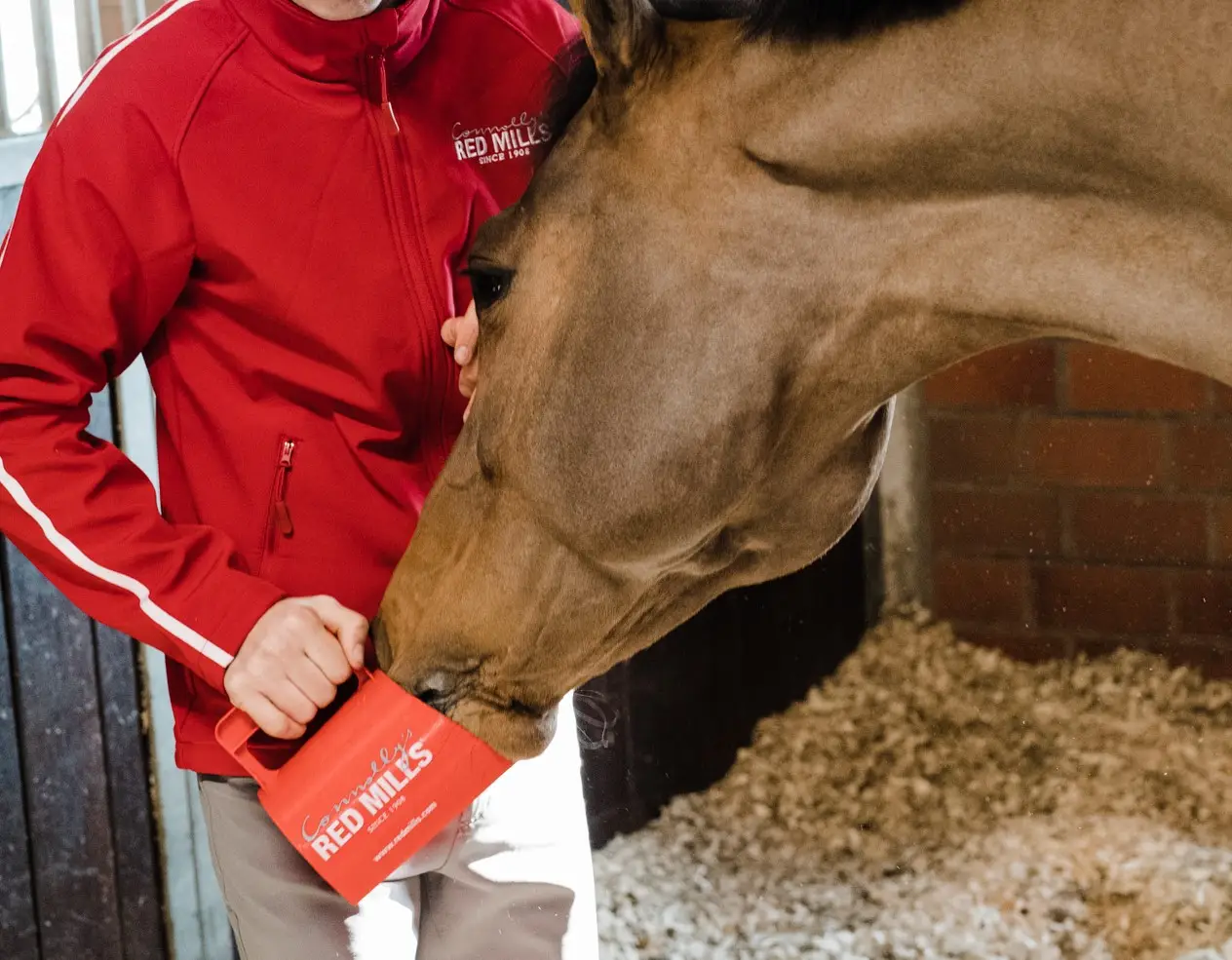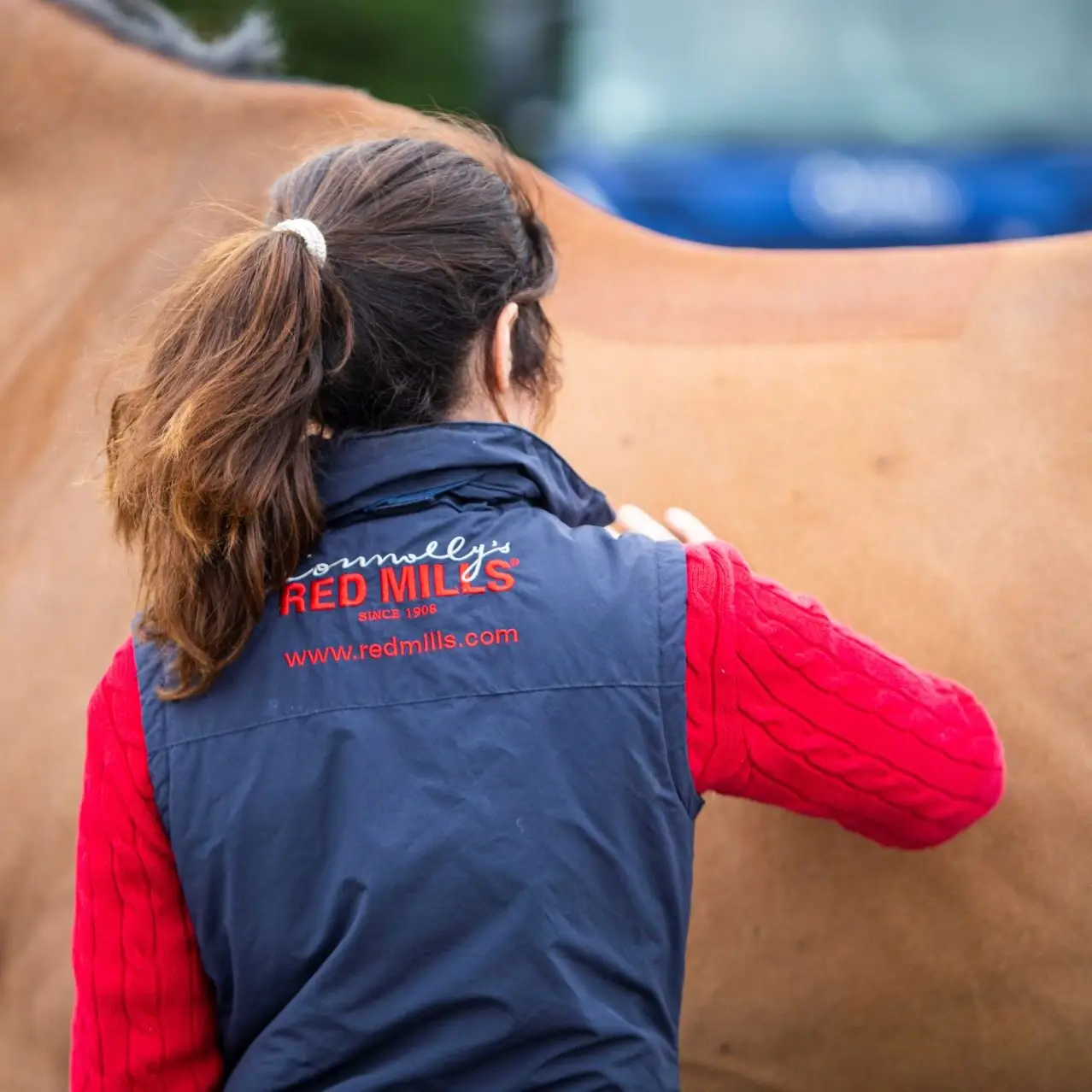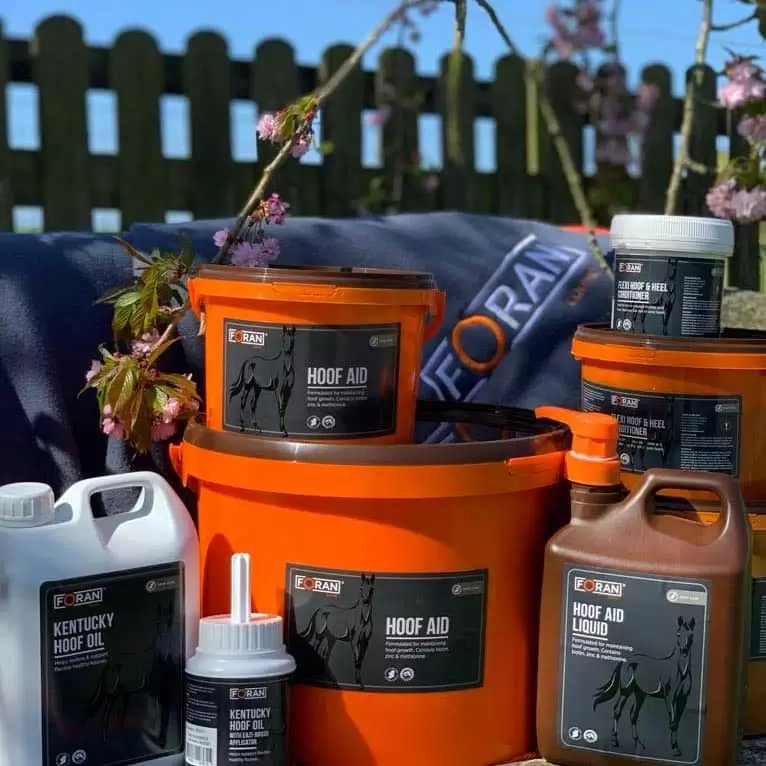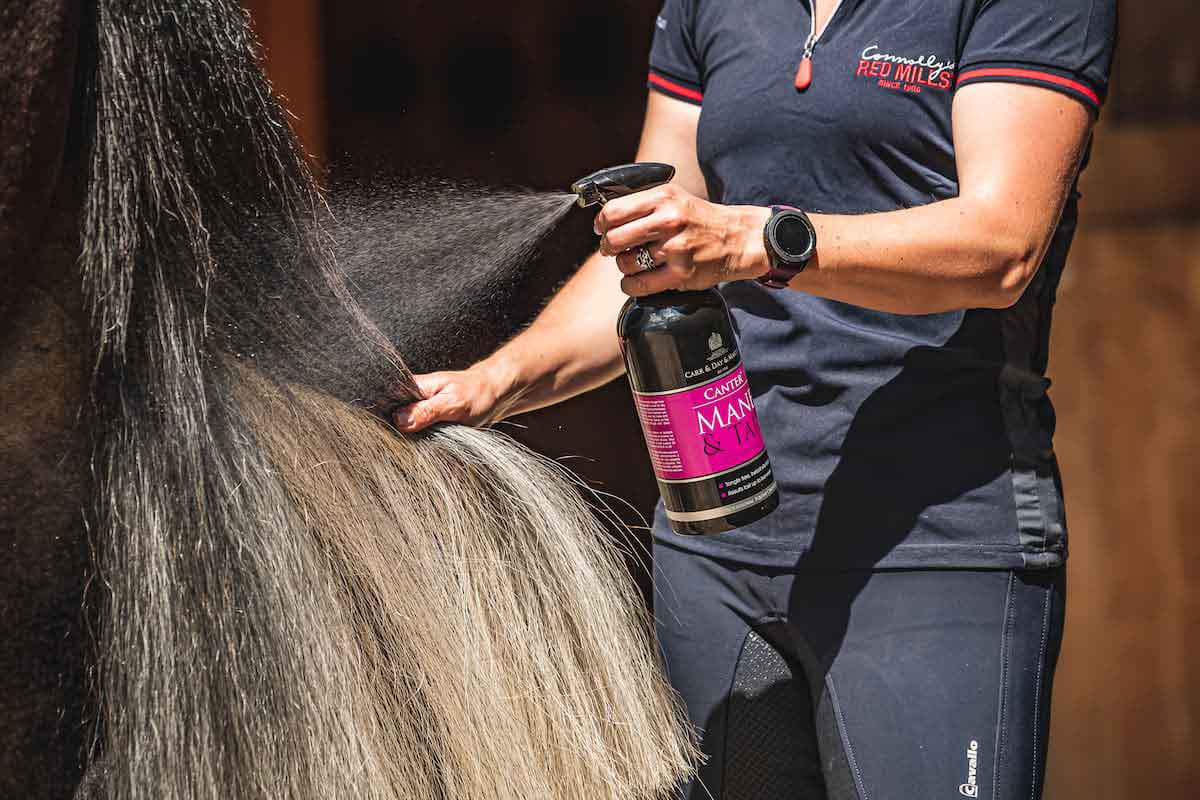Should you steak or sok your hay? Which is best?
Hay is one of the most common forages fed to stabled horses. Feeding a good quality hay is not only essential for their digestive health but also for their overall wellbeing and respiratory health. For health reasons it may be necessary to reduce the Water Soluble Carbohydrate (WSC) content or Respirable Particles (RP) (dust) in your hay. To do this there are two common wetting treatments used, soaking and steaming. When deciding which treatment to use it is important to understand how this will affect the nutritional quality and hygienic quality of your hay.
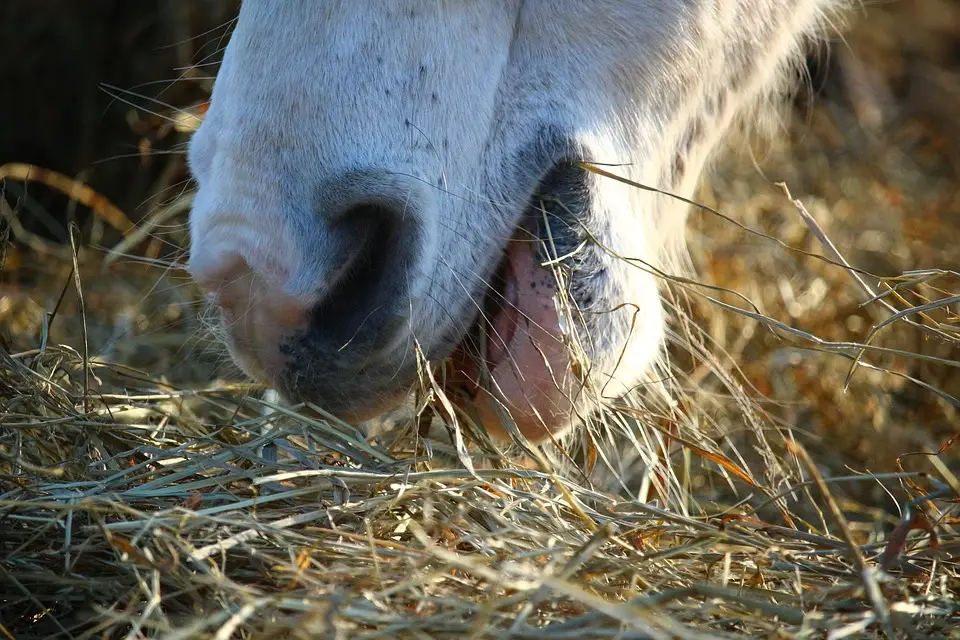
Nutritional Quality: The stage of growth at time of harvest and the mixture of different grasses or other herbage present influence the nutritional quality of hay. Most hay will have a WSC content of 100-310g/kg dry matter (DM); even hay made from ‘poor’ pasture can still have a high WSC content. For horses with Insulin Resistance (IR) Laminitis, Polysaccharide Storage Myopathy (PSSM) and Equine Metabolic Syndrome (EMS) this WSC content will be too high. For a horse with these conditions a hay with a WSC content of <100g/kg DM is recommended.
Hygienic Quality: The hygienic quality of hay will be influenced by the weather during harvest, the conservation process and storage conditions. Poor forage hygiene has long been associated with respiratory diseases such as Recurrent Airway Disorder (RAO) in horses. Hay can contain a high concentration of RP, which will include a wide range fungal spores, bacteria, dust and pathogens.
There has been a lot research done on the effect of soaking and steaming, and more recently a combination of both, on the nutritional quality and hygienic quality on hay.
SOAKING: This is a process where hay is completely submerged in water for a certain period of time.
NUTRITIONAL QUALITY: Soaking can result in a significant, but variable, loss of WSC in hay. Research has found losses can range from 9-54% when soaked for 9 hours at 16˚C. Soaking also significantly reduces the mineral content of
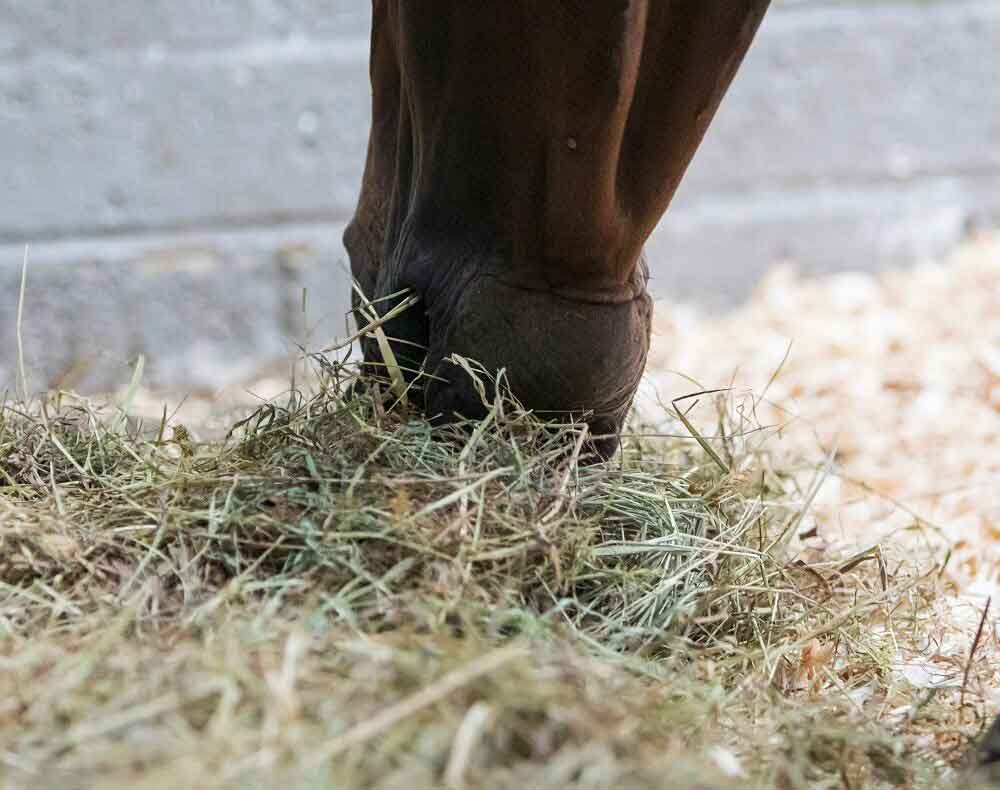
hay, with a study finding that soaking for just 30 minutes reduced the levels of minerals such as phosphorus, potassium, magnesium, sodium and copper. Soaking can also cause a loss of palatability. It should also be noted that the post soak liquid has been reported to have a biological oxygen demand of 9 times that of raw sewage and it needs to be disposed of carefully.
HYGIENIC QUALITY: Research has shown that soaking hay for 10-30 minutes can reduce RP by 93%, whilst simply ‘watering’ hay reduces RP by only 43%.
However, soaking hay can increase the microbial (bacteria and mould) content dramatically. Research has shown that soaking for 10 minutes increased bacteria 1.5 fold and a 5 fold increase was found when hay was soaked for 9 hours. This could have serious implications and may increase the risk of problems such as colic. The decrease in the hygiene quality of soaked hay must carefully be considered alongside the beneficial reduction in WSC, particularly for horses needing a low sugar and starch diet.
STEAMING: This is the process where steam is injected into the hay at temperatures of around 100˚C for a certain amount of time.
NUTRITIONAL QUALITY: One of the benefits of steaming hay is that is has no effect on the nutritional value of hay. Proteins and minerals all remain the same, although there may be a very small and variable decrease of the WSC content of between 3-18%.
HYGIENE QUALITY: Steaming using a commercial steamer is the most effective way of significantly reducing RP in hay and is reported to reduce mould spores and bacteria by up to 99%. Commercial steamers steam the hay for around 1hr at approximately 100˚C. Most are designed to distribute steam evenly throughout the bale, ensuring the whole bale is steamed thoroughly. It has also been shown that the lower RP achieved by steaming can last up to 4 days. However, it is recommended that steamed hay is fed within 12-24 hours to prevent other contamination. Steaming has also been shown to increase palatability of hay and is better for the environment, compared to soaking.
SOAKING & STEAMING:
The effects of combined steaming and soaking to reduce the WSC content, whilst maintaining its hygienic quality, has also been studied.
NUTRITIONAL QUALITY:
Research has shown that soaking hay first for 9 hours, followed by steaming for 50 minutes at 100˚C in a commercial steamer, is the most effective way of reducing WSC with losses of between 24-51%. Although mineral loss was not measured in the study, it is assumed that the losses are similar to those of soaked hay. This combined soaking and steaming treatment produces clean and comparatively low sugar hay, meaning it is ideal for horses suffering from, or at risk of, IR, Laminitis, PSSM and EMS.
HYGIENE QUALITY:
As with steaming alone, soaking followed by steaming reduces the microbial content of hay by up to 99%. It should be noted that the order of soaking and steaming is important, steaming followed by soaked is not effective at reducing bacterial counts and may in fact create an ideal environment for certain bacteria to proliferate. Although soaking and steaming is labour intensive, it does result in a hygienic and low WSC hay.
Soaking hay does have the benefit of reducing the WSC content, although the results can be variable. On the other hand, soaking results in a loss of mineral content and potentially an increase in microbial content. If steaming is not possible, soaking the hay for 9hrs, or 6 hrs in hot weather, is an easy and practical way to reduce WSC content for horses needing a low sugar and starch diet including those prone to PSSM, IR and laminitis.
Steaming, using a commercial steamer, has been shown to be the most effective way of significantly reducing the microbial content and RP in hay. It is ideal for horses prone to respiratory conditions such as RAO. However, steaming alone only has a small effect on the WSC content. For horses who require a hygienic, low WSC hay soaking, followed by steaming, is recommended.
